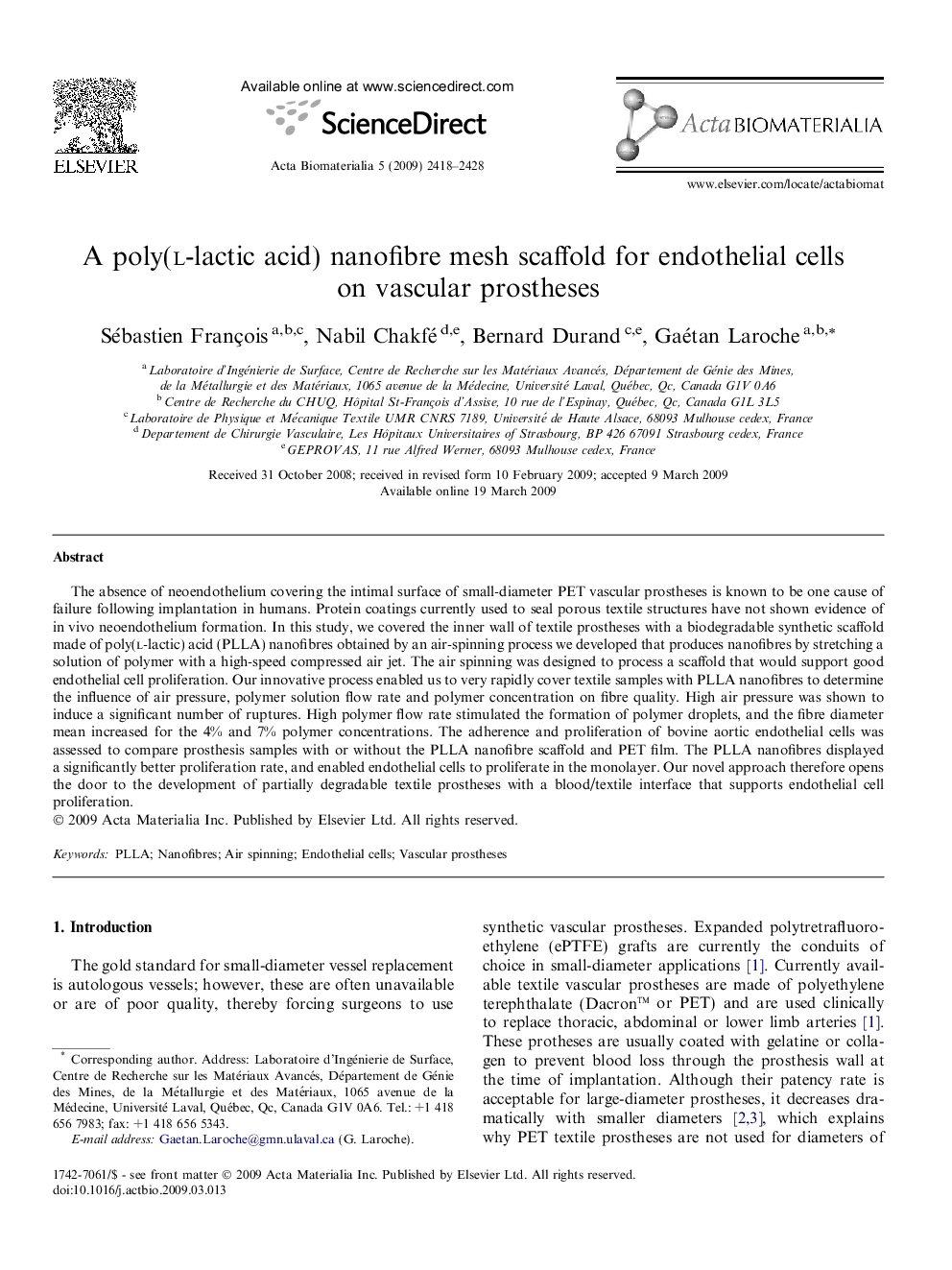| Article ID | Journal | Published Year | Pages | File Type |
|---|---|---|---|---|
| 1923 | Acta Biomaterialia | 2009 | 11 Pages |
The absence of neoendothelium covering the intimal surface of small-diameter PET vascular prostheses is known to be one cause of failure following implantation in humans. Protein coatings currently used to seal porous textile structures have not shown evidence of in vivo neoendothelium formation. In this study, we covered the inner wall of textile prostheses with a biodegradable synthetic scaffold made of poly(l-lactic) acid (PLLA) nanofibres obtained by an air-spinning process we developed that produces nanofibres by stretching a solution of polymer with a high-speed compressed air jet. The air spinning was designed to process a scaffold that would support good endothelial cell proliferation. Our innovative process enabled us to very rapidly cover textile samples with PLLA nanofibres to determine the influence of air pressure, polymer solution flow rate and polymer concentration on fibre quality. High air pressure was shown to induce a significant number of ruptures. High polymer flow rate stimulated the formation of polymer droplets, and the fibre diameter mean increased for the 4% and 7% polymer concentrations. The adherence and proliferation of bovine aortic endothelial cells was assessed to compare prosthesis samples with or without the PLLA nanofibre scaffold and PET film. The PLLA nanofibres displayed a significantly better proliferation rate, and enabled endothelial cells to proliferate in the monolayer. Our novel approach therefore opens the door to the development of partially degradable textile prostheses with a blood/textile interface that supports endothelial cell proliferation.
